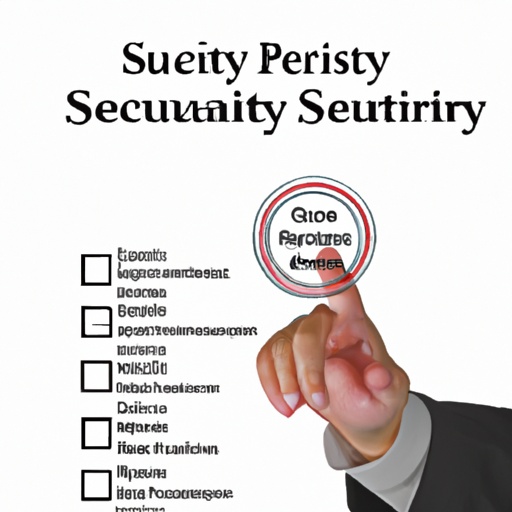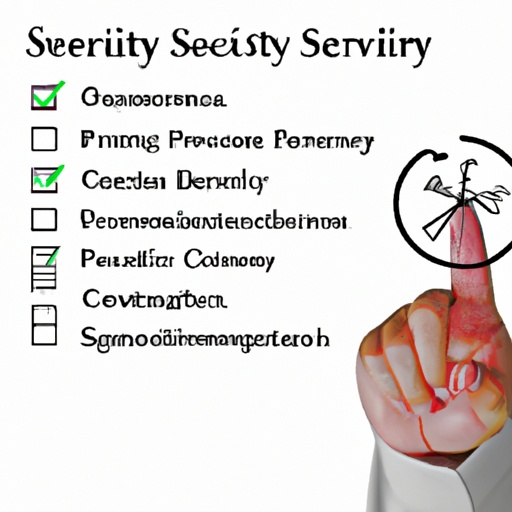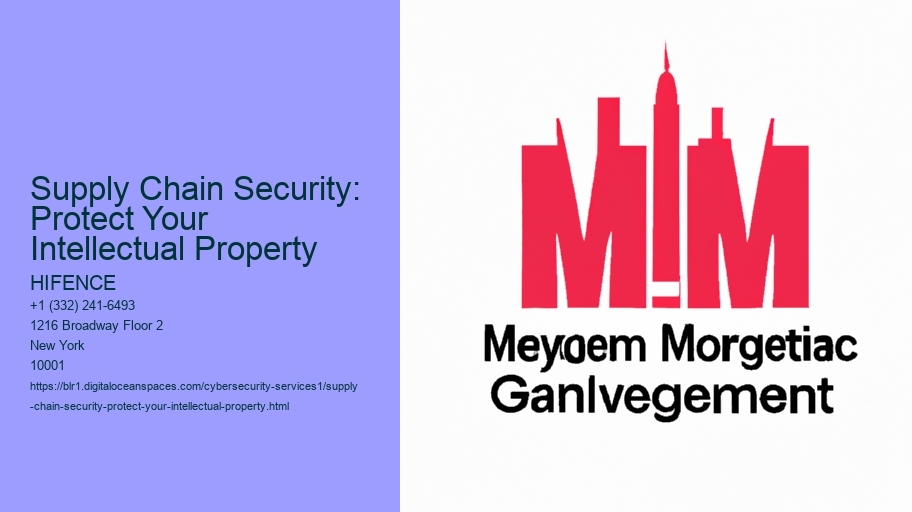Understanding the Threat Landscape to Supply Chain IP
Understanding the Threat Landscape to Supply Chain IP: Protecting Your Intellectual Property
The term "supply chain security" often evokes images of cargo ships, locked warehouses, and maybe even cybersecurity firewalls protecting sensitive data. But what about the very thing that makes your business unique and competitive: your intellectual property (IP)? Understanding the threat landscape to your supply chain IP is absolutely crucial!
IP, in this context, isnt just patents and trademarks (though those are important too!). It also encompasses trade secrets, proprietary designs, formulas, and even customer lists. These are the assets that give you an edge, and unfortunately, theyre increasingly vulnerable throughout the supply chain.
The threats are multifaceted. Consider a manufacturer overseas (perhaps a partner, perhaps not) who gains access to your designs. Are they truly implementing them according to your specifications, or are they subtly adapting them for their own future use, potentially competing with you down the line? (A scary thought, right?) Or think about a logistics provider handling shipments of your innovative product. Could an employee be tempted to leak information about its composition or workings to a competitor?
The digital realm presents another layer of risk. Digital designs, manufacturing processes, and even customer data are transmitted electronically throughout the supply chain. managed services new york city A weak link in a partners cybersecurity, a compromised email account, or a simple phishing attack can provide access to valuable IP.
Supply Chain Security: Protect Your Intellectual Property - check
- check
- managed it security services provider
- managed service new york
- check
- managed it security services provider
Therefore, proactively assessing and mitigating these risks is paramount.
Supply Chain Security: Protect Your Intellectual Property - managed it security services provider
- managed service new york
- managed service new york
- managed service new york
- managed service new york
- managed service new york
- managed service new york
- managed service new york
- managed service new york
- managed service new york
- managed service new york
- managed service new york
- managed service new york
Identifying and Classifying Your Critical Intellectual Property
Identifying and classifying your critical intellectual property (IP) is absolutely fundamental when it comes to supply chain security! Think of it like this: you cant protect what you dont know you have. Before even considering things like encryption or vendor screening, you need to understand what your crown jewels actually are.
This process involves more than just thinking about patents (though those are important, of course!). Its about recognizing all the intangible assets that give your company a competitive edge. This might include trade secrets (like that secret sauce recipe!), proprietary algorithms, unique designs, customer data, or even specialized manufacturing processes.
Once youve identified these assets, you need to classify them based on their value and sensitivity. Is it information that, if leaked, would cripple your business? Or is it something that, while valuable, wouldnt cause catastrophic damage? This classification will directly inform the level of security you apply to each type of IP. managed it security services provider managed services new york city A highly sensitive trade secret, for instance, will require much more stringent protection measures than, say, a general marketing strategy document.
This isnt a one-time task, either. As your business evolves, so too will your critical IP. Regularly reviewing and updating your inventory and classification scheme is crucial to ensure your supply chain security measures remain effective. Its a continuous process of discovery and protection!

Assessing Supply Chain Vulnerabilities and Risks
Supply chain security isnt just about keeping physical goods safe; its also critically about protecting your intellectual property (IP). A crucial step in securing your IP within the supply chain is assessing vulnerabilities and risks. This isnt a one-time activity but an ongoing process!
Think of your supply chain as a complex web (with many potential points of failure). Each node, from suppliers to distributors, represents a potential weak link where your IP could be compromised. Assessing vulnerabilities involves pinpointing these weak spots. Are your suppliers using outdated security protocols? (Thats a vulnerability!) Do subcontractors have access to sensitive design documents? (Another potential risk!)
Risk assessment goes a step further. Its not enough to just identify vulnerabilities; you need to understand the likelihood of a breach and the potential impact if your IP is stolen or copied. A small supplier with lax security in a country known for IP theft poses a higher risk than a large, well-protected domestic partner.
This assessment should cover everything from data security (how your designs are transmitted and stored) to physical security (access to manufacturing facilities). Employee awareness is also key (are your employees trained to recognize and report suspicious activity?).
By proactively assessing supply chain vulnerabilities and risks, you can implement targeted security measures to protect your valuable intellectual property! Its a vital investment in the long-term health and competitiveness of your business.
Implementing Security Controls and Best Practices
Implementing Security Controls and Best Practices for Supply Chain Security: Protect Your Intellectual Property
Protecting intellectual property (IP) within your supply chain is absolutely critical in todays interconnected world. managed service new york Think about it: your most valuable assets, the innovations that give you a competitive edge, often traverse multiple organizations and systems. That's where implementing robust security controls and best practices comes in.
One of the first steps is understanding where your IP resides within the supply chain – mapping its journey from creation to delivery (or deployment). This involves identifying all the touchpoints and potential vulnerabilities at each stage. Next, focus on implementing strong access controls. Restrict access to sensitive information based on the principle of least privilege; only grant access to those who absolutely need it. Multi-factor authentication (MFA) is a must, adding an extra layer of security beyond just passwords.
Furthermore, consider using data encryption both in transit and at rest. This ensures that even if data is intercepted, it remains unreadable without the proper decryption key. Regularly assess the security posture of your suppliers. Conduct audits (both physical and digital) to ensure they are adhering to your security standards and best practices. A weak link in your supply chain can easily become a gateway for IP theft.
Contractual agreements play a crucial role. Clearly define security expectations and responsibilities within your contracts with suppliers (think about NDAs and security clauses). Educate your employees and suppliers! Regular training programs on cybersecurity awareness and best practices are essential for preventing accidental data leaks or falling victim to phishing attacks. Finally, establish incident response plans. Be prepared to quickly detect, respond to, and recover from security incidents that may impact your intellectual property. By taking these proactive steps, you can significantly strengthen your supply chain security and protect your invaluable intellectual property!

Due Diligence and Vetting of Suppliers
Supply Chain Security: Protecting Your Intellectual Property Through Due Diligence and Vetting
In todays interconnected world, supply chains are complex webs stretching across continents. This intricate network, while offering efficiency and cost-effectiveness, also presents significant vulnerabilities, particularly when it comes to protecting your intellectual property (IP). One of the most crucial steps in mitigating these risks is implementing robust due diligence and vetting processes for all suppliers.
Think of it like this: you wouldnt hand over the keys to your house to a complete stranger, right? Similarly, you shouldnt entrust sensitive information or critical components to a supplier without thoroughly checking them out. Due diligence involves investigating a potential suppliers background, reputation, financial stability, and security practices. This might include reviewing their certifications, conducting site visits (if possible), and checking for any past instances of IP infringement or security breaches. Its about understanding who youre dealing with and what their capabilities and vulnerabilities are.
Vetting goes a step further. Its an ongoing process of monitoring and evaluating existing suppliers. This involves establishing clear security requirements and contractual obligations related to IP protection. Regular audits, security assessments, and communication are essential to ensure suppliers are adhering to these standards. Imagine it as a continuous health check-up for your supply chain! Are they still healthy and secure, or are there signs of potential problems brewing?
Why is this so important? Because a weak link in your supply chain can expose your valuable IP to theft, counterfeiting, or unauthorized use. This can result in significant financial losses, damage to your brand reputation, and a loss of competitive advantage. Its not just about protecting your patents or trademarks; its about safeguarding your innovation, your competitive edge, and your future!
Effective due diligence and vetting arent just about ticking boxes; they require a proactive and risk-based approach. By investing in these processes, youre investing in the long-term security and resilience of your supply chain, and ultimately, the protection of your intellectual property. Its a critical investment in securing your businesss future!
Monitoring and Auditing Your Supply Chain Security
Monitoring and auditing your supply chain security – it sounds complicated, right? But think of it like this: your intellectual property (IP) is the secret sauce, the special ingredient that makes your business unique and successful. check Protecting it means making sure no one else gets their hands on that recipe!
Your supply chain isnt just about getting widgets from point A to point B. Its a complex web of relationships with suppliers, manufacturers, distributors, and more. Each of these points represents a potential vulnerability, a place where your precious IP could be exposed (think of it like holes in your fence).
Monitoring is about keeping an eye on things. Its about proactively tracking whats happening within your supply chain. Are your suppliers following security protocols (are they locking the doors)? Are there any unusual activities or data breaches reported in their networks? This is where tools like data analytics and threat intelligence come into play. They can help you spot potential problems before they become major crises.
Auditing, on the other hand, is more like a check-up. Its a formal assessment of your supply chain security practices. This involves reviewing contracts, policies, and procedures to ensure theyre up to par (are they actually using the locks?). It also means physically inspecting facilities and interviewing personnel to make sure everyone understands and follows the rules. check Regular audits help identify weaknesses and areas for improvement.
Together, monitoring and auditing create a robust defense for your IP. They provide ongoing visibility into your supply chain and help you identify and address vulnerabilities before they can be exploited. Its an investment in your businesss future, ensuring your secret sauce remains your own!
Incident Response and Recovery Planning
Supply chain security is a critical concern, especially when it comes to protecting your intellectual property (IP). Imagine your carefully crafted designs, formulas, or software code falling into the wrong hands! Thats where robust Incident Response and Recovery Planning comes into play.
Think of it as having a fire drill for your business. You wouldnt wait for a fire to break out before figuring out where the exits are, right? Similarly, you need a pre-planned strategy for when (not if!) a security incident threatens your supply chain and, consequently, your IP.
An effective Incident Response plan outlines the steps to take when something goes wrong. This includes identifying the incident (Is it a data breach? Counterfeit products?), containing the damage (Shutting down compromised systems, alerting affected partners), eradicating the threat (Removing malware, tracing the source of the leak), and recovering your operations (Restoring data, implementing new security measures). Its like a well-rehearsed dance, ensuring everyone knows their role and minimizes the impact.
Recovery Planning, on the other hand, focuses on getting you back on your feet after an incident.
Supply Chain Security: Protect Your Intellectual Property - managed services new york city
- managed service new york
- managed it security services provider
- managed service new york
- managed it security services provider
- managed service new york
- managed it security services provider
- managed service new york
- managed it security services provider
- managed service new york
- managed it security services provider
Why is this so vital for protecting IP? Because a compromised supply chain can expose your IP to theft, counterfeiting, or unauthorized modification. A supplier with poor security practices could be the weak link that allows a competitor to steal your designs. A shipping company with inadequate tracking could be used to divert counterfeit products into the market.
Therefore, its essential to assess the security risks in your supply chain (due diligence!) and develop Incident Response and Recovery Plans that specifically address the threat to your IP. This includes things like:
- Having clear contracts with suppliers that outline security requirements.
- Implementing strong authentication and access control measures (two-factor authentication is your friend!).
- Regularly monitoring your supply chain for suspicious activity (Think of it as digital surveillance!).
- Educating your employees and suppliers about security threats and best practices (Knowledge is power!).
By proactively planning for incidents and having a solid recovery strategy, you can significantly reduce the risk of losing your valuable intellectual property and maintain a competitive edge! Thats how you protect your assets and sleep better at night!
